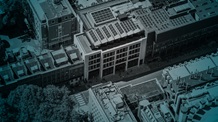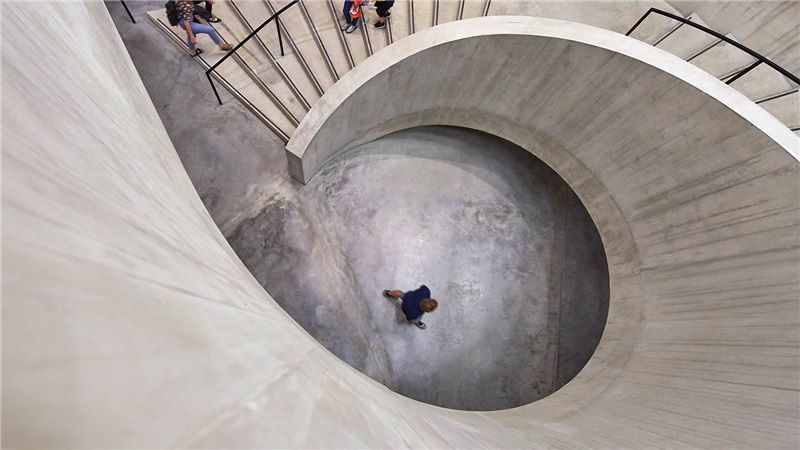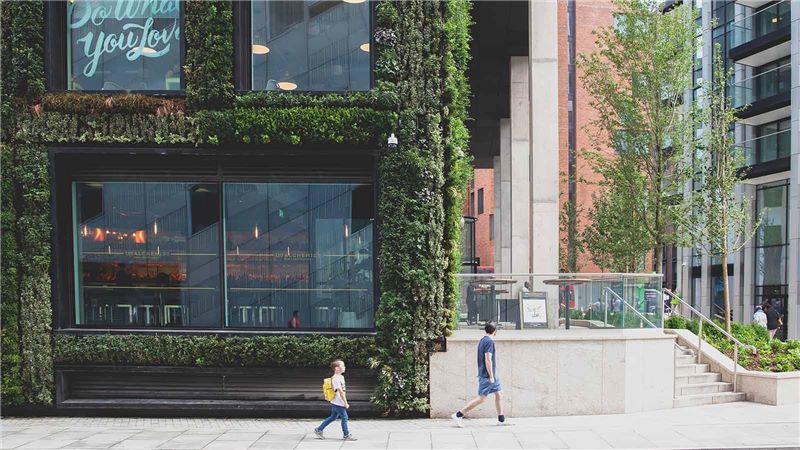What does the future hold for construction?
Mace recently appointed Patrick Dixon as Non-Executive Director. As an advisor on global trends to many of the world’s largest corporations, Patrick is bringing fresh ideas to our organisation, in our journey to modernise construction.
He is the author of 17 books including ‘SustainAgility", on greentech innovation, and the ‘Future of almost Everything’, in which he warned about risks from new viral pandemics, and the environmental challenges of megacities.
We interviewed Patrick to get his thoughts on the future of construction and sustainability, in a post-COVID world.
- What will be the impact of a COVID-19 vaccine on the construction sector?
-
As I predicted in March 2020, “the world continues to turn” despite many disruptions caused by the pandemic, and large parts of industry have indeed been relatively unaffected. The construction sector across Europe proved to be extraordinarily resilient. 95% of people were back on site within weeks of the first lockdown. That reflected the ambition of many governments to keep their nations at work safely, and to stop their own economies from grinding to a halt. Vaccines will help many of our clients get back to normal life, but the construction sector itself has been implementing many safety measures to bring people back to work already.
A major issue with COVID-19 vaccines will be lack of availability and distribution in developing countries during 2021. Despite this, I expect global aviation to pick up again significantly from August 2021, and many airports to then start reactivating their stalled programmes, as we head into 2022.
- Do you think some of the positive impacts on the construction sector resulting from the pandemic (such as more collaboration and use of technology), will continue even as the impact of the virus fades into the background?
-
COVID-19 has forced companies to be more agile and efficient. For example, we've seen a major increase in virtual team leadership and in collaboration across businesses. The digital tools were already there, but most companies were hardly using them. As societies manage to get the virus under control, we will continue to be more agile, efficient and environmentally friendly.
Big questions remain around how we’ll use workplaces in the future, but most people who used to work in offices before COVID-19 will continue to do so when the pandemic is over – albeit less often. We will need to focus more on the experience of people in offices – for many there will need to be stronger reasons to travel into the workplace. For example face to face meetings with other team members, building trust with clients, and doing deals.
- What would you say is the biggest risk in delivering major projects?
-
The greatest risk by far for anyone running a major, complex project – from the Prime Minister to the teams rolling out COVID-19 vaccines – is “Institutional Blindness”.
When people have been in the same project or industry for too long, it’s easy to lose sight of things that may be more obvious to someone with fresh eyes. All large teams can benefit from diverse thinking. Disregarding small things or changes can create great risks for complex projects, and the answer often lies in having people around you to challenge “the way we do things”.
That’s why diversity and inclusion are so important: not just from the equality point of view, but also because teams from a wide range of backgrounds and experiences are proven to be more likely to drive radical innovation and creativity. - What else can organisations do to overcome Institutional Blindness?
-
It’s all about collaboration, co-operation or even co-opetition (when competitors align themselves together to find solutions to common goals). The UK construction industry is very fragmented, which can often lead to added costs and risks. COVID-19 has shown us that the industry is much more effective when partners work closely together.
- What’s the next big thing that will change the way we work, especially in construction?
-
Next-generation Digital. When you combine the power of Big Data with the Internet of Things, the Cloud and Artificial Intelligence, you create all kinds of possibilities, which will help to transform how we build and manage infrastructure, and how we manage entire cities. We’ve been talking about these things in construction for a long time, but the benefits have not been as immediately obvious as in - say - mobile payments or online retail.
Expect rapid progress in Predictive Analytics to warn of future events in infrastructure management. For example, Predictive Analytics is already being used successfully to identify major equipment failures which may be about to take place in offshore oil rigs, which could otherwise result in loss of life and ecological disaster. - You mentioned green buildings and the importance of protecting the environment. What do you think is the next big change in delivering green buildings?
-
It’s not enough to create smart buildings that are ultra-efficient to heat or cool. We also need to focus on how long those buildings will actually last. My own home was built in 1842 and I expect will still be lived in by the year 2300. But I don’t know many commercial tower blocks or factories being built today around the world that have a life-expectancy of much more than 50 years - indeed many buildings being demolished today are less than 40 years old.
This really matters, because 30% of the entire energy consumed in the average life cycle of a typical office tower is the energy consumed in building it, and 10% more can be consumed in demolition.
We need to see far more life-enhancing, iconic structures that people will love and enjoy using for generations to come. That means regulators, government planners, architects and project owners all working together with longer term vision. As part of this, we will also see rapid growth in repurposing older buildings, refitting their interiors, extending their useful lives.
Secondly, we talk a lot about recycling as being good for the environment. And we will see massive growth in recycling of building waste. But we can go a lot further.
The truth is that most recycling in our communities is down-cycling. For example, plastic drinking bottles converted into lower-grade insulation products. But closed-cycling is where those same plastic drinking bottles are collected, melted down and recast into new plastic bottles.
Can we do similar things in construction? Yes indeed, and it’s already happening in the case of steel girders and so on. By 2050 many high-efficiency, carbon-neutral buildings will be going up in cities that are destined one day to be dismantled almost entirely into their component parts, so that most of the building materials (and some individual components) can be reused. Now if you achieve that, it becomes less of an issue to remodel an inner city landscape for every new generation.














